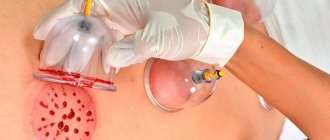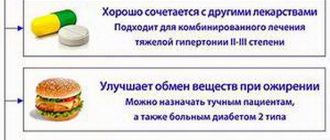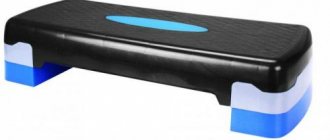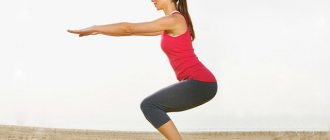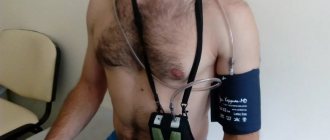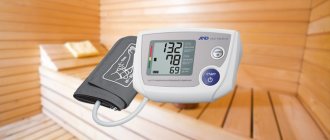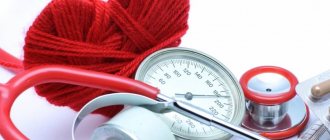Although the pharmacy industry is growing at a rapid pace, alternative medicine has become increasingly popular in recent years. His recipes are used for various diseases.
Folk recipes, aromatherapy, leeches and other methods are again being used to help strengthen the immune system and cure many health problems. Such therapeutic methods also include phlebotomy (Hijama).
Before deciding to use this method, it is important to understand what it is and how it affects the human body.
Description
Bleeding, whose scientific name is phlebotomy, is a procedure whose main purpose is to collect blood from the body in a certain amount.
The session is performed through a shallow vein incision or puncture.
There are two types of hijab:
- General;
- local.
This method helps remove useless and stagnant blood fluid from the body. Against this background, the body begins to produce new, effective and high-quality blood, rich in important enzymes.
Advantages and disadvantages of the method
When we talk about the benefits and harms of phlebotomy, there are many pros and cons. When wearing an Islamic or Chinese hijab, blood drips out as a result of capillary rupture, which helps activate hemostasis. In no more than three seconds, the process of blocking the blood vessels begins.
Due to irritation of the nerve endings, the spinal cord receives signals that promote the activation of its segment. Nerve impulses are then delivered to the organs attached to this segment.
Chinese and Islamic phlebotomy relieves the body of stagnant fluids containing large amounts of toxins. The blood is restored.
The essence of the Tibetan method is practically no different from the above, since a small incision in the vein also helps to activate the hemostatic system.
European phlebotomy has less useful properties compared to previous types, since in this case there is no activation of local self-regulatory systems. It only removes a significant amount of blood fluid.
This method is only useful when it comes to saving human lives.
Most experts agree that European hijama is more harmful than beneficial to human health. This happens when enough blood has been collected:
- the hematopoietic system is activated;
- bone marrow activity is stimulated;
- temporarily weakens the immune system;
- the amount of oxygen needed decreases.
Significant damage occurs when Chinese, Islamic, or Tibetan phlebotomy is performed by an inexperienced practitioner or for inappropriate indications.
To get the maximum benefit from phlebotomy, it is necessary to have adequate knowledge about the dot pattern. Poor choices can activate the wrong systems and organs, leading to significant deterioration in health. This technique should only be performed when necessary.
Hijama and high blood pressure
Bloodletting is an ideal method of training and restoring the body using its own functions.
Hypertension is high blood pressure, which is accompanied by headaches, tinnitus, dizziness and general malaise. It occurs when blood vessels become clogged or lose their elasticity. With increased pressure, the heart begins to work faster, thereby creating pressure inside the blood vessels. Every second inhabitant of the Earth suffers from high blood pressure.
Hijama helps to cope with this in the following ways:
- Cleansing blood from stagnation, which leads to less stress on the heart.
- Renewal of capillaries by cutting off old ones and appearing new ones.
- Suction of blood clots, as a result, better blood flow through the vessels.
During medical research, it was found that with the right diet for heart patients with a course of hijama, it is possible to recover from heart disease. Thanks to the procedure, the load on blood circulation in the vessels coming from the heart or to the organ is reduced. As a result, the heart muscle is better supplied with blood. An experiment was carried out on time, in which the rats were given poison and immediately bloodletted, after which all the rats remained alive.
Contraindications
Side effects may occur if the procedure is performed incorrectly or despite existing contraindications.
Bloodletting is strictly prohibited in the following cases:
- low hemoglobin;
- Low levels of red blood cells and platelets in the blood (this is determined by a clinical blood test taken from a finger prick)
- low blood pressure;
- severe heart disease (exception is when the disease is complicated by heart failure);
- asthenia;
- the period of childbirth (if eclampsia is diagnosed, on the contrary, hijama will be useful);
- severe atherosclerosis;
- age from 70 to 20 years;
- serious mental disorders;
- low hematocrit.
Temporary contraindications include:
- serious injuries or operations on internal organs, especially when these situations are associated with blood loss (must pass at least 21 days);
- recent flu, cold or sore throat (at least 14 days must pass from the moment of complete recovery to the session)
- period during menstruation, as well as a week after its end.
To decide on a procedure, make sure there are no restrictions on it.
How is the session going?
Hijama is done at certain points where the greatest stagnation is observed.
Hijama is done by capillary. The procedure is recommended to be carried out according to the Muslim calendar on the 17th, 19th and 21st days. Monday, Tuesday and Thursday are considered lucky. During the session, the patient's body is treated with cumin oil. Sterile jars are placed at certain points, and a vacuum is created in them using a special device. Leave until the skin turns dark red. Next, an incision is made with a blade (if the patient is sensitive to pain, in this case the skin is pierced with a medical needle, as with an injection) and the jar is placed back. In this case, the blood is drawn into the jar due to the vacuum created in it. At the end, the wounds are treated with cumin oil to disinfect the wound and promote rapid healing. This is how wet hijama works.
There is another type - dry hijama. During the procedure, the body is massaged with special cups, thereby creating a slight irritation of the skin, but without cutting the blade. It can be carried out both for preparation before wet hijama, as well as for the main procedure. This type is often used in cosmetology as an anti-cellulite massage (vacuum massage).
Recommendations before and after the procedure
- Carry out on an empty stomach - do not eat three hours before the procedure.
- Do not eat meat the day before hijama, but eat easily digestible food.
- Set yourself up for recovery.
- Rest after the procedure.
- Stop smoking during the first 24 hours. Be sure to inspect wounds for inflammation.
- On the second day, the temperature may rise or vomiting may appear - this is normal and will pass quickly.
Which parts of the body are suitable for bloodletting and a diagram of the points
The essence of treating bleeding is to influence certain areas of the human body that are responsible for a given organ or system. The point atlas was introduced into the Sunnah.
As energy flows through certain meridians in the body, there is an intersection of energy flows. By influencing a specific area, the necessary disease is treated.
Some points are designed to enhance immunity, some to restore and accumulate fluids in the blood, and some to strengthen the human brain. Location of these areas:
- power lines;
- nerves;
- The lymph nodes;
- blood vessel.
The full atlas of glasses is presented in the figures.
On legs and arms:
Location on the head:
What's the point?
Hijama for high blood pressure is used in many countries and dates back to the times of the Prophet Muhammad, when it was used to solve many other disorders, including poor health associated with sensations caused by hypertension.
Only back then they didn’t know what it was called or how it appeared.
High blood pressure is caused by many reasons, but problems with the circulatory system become the basis for this.
The presence of stagnation and contamination with toxins and harmful substances due to improper lifestyle and environmental damage over time leads to the gradual appearance and intensification of a number of negative effects.
And if at the beginning it is enough to take one tablet once a month, then over the years they have to be taken as prescribed by doctors not just one, but several times a day. Only there does help in regulating the current state of the body occur.
It is obvious that a large number of drugs, and indeed their use in general, contributes not only to the treatment of the source of the problem, but also makes other organs (especially the liver and kidneys, as well as the circulatory system) work in other enhanced modes.
We recommend: Reviews about hijama
This causes them to wear out faster, and the blood begins to become contaminated. Hijama for high blood pressure helps to solve a number of problems at once and achieve the long-awaited effect.
Cleansing the circulatory system of harmful impurities, as well as a direct effect on stagnant areas, along with the removal and outflow of part of the blood, helps to trigger active regenerative processes within the body.
That is, the circulatory system automatically begins to restart as soon as a missing amount is detected. This is how the body starts hematopoiesis, due to which, thanks to the procedure, recovery begins.
Map of points
The procedure is carried out according to a strictly defined principle, which consists of influencing a map of points or, more simply, an atlas. That is, certain places on the body allow you to influence specific organs and systems of the body. Accordingly, there are zones that are responsible specifically for pressure.
Hijama pressure points are located along the spine, on the head and on the legs. The selection and combination is prescribed by the treating specialist, whose qualifications must be no lower than that of a doctor.
You should also be aware of potential contraindications that may also be present, and then the effect will be completely opposite from the desired one.
The procedure itself consists of the following list:
- preliminary sterilization of instruments: medical cups and the thinnest scalpel;
- applying cumin oil to the areas that will have to be worked with preliminary sterilization;
- placement of cans according to the point atlas;
- waiting for some time (usually it takes about 3-5 minutes);
- removing the cans and making thin cuts, followed by returning the cans to their original places;
- blood purification by vacuum suction of contaminated parts;
- removing the cupping system and lubricating it with cumin oil.
Using cumin during the procedure helps speed up the healing process.
Reviews of hijama for high blood pressure
According to doctors’ prescriptions and collected statistics, the reviews are extremely positive. This is due to the high degree of effectiveness of the procedure specifically when indicated for hypertension. Achieved effects according to reviews from most patients:
- lowering blood pressure down to average normal levels;
- significant improvement in well-being;
- elimination of pain and compression in the temples caused by previously elevated blood pressure;
- increased activity (here we are talking about both mental and physical) and mood;
- rejuvenation of face and body.
We recommend: How is hijama performed for osteochondrosis?
Hijama for various diseases
Indications for the use of the Chinese technique are the following pathological conditions:
- acne;
- radiculitis;
- gastrointestinal disorders;
- sharp pain, especially headache;
- pharyngitis in various forms;
- frequent cramps and radiculitis;
- hearing impairment;
- Epileptic seizures;
- formation of boils;
- conjunctivitis;
- paresthesia;
- shingles;
- hypertension;
- asthenia.
Islamic technique is used for diseases such as:
- atherosclerosis;
- allergic reactions;
- phlebeurysm;
- insomnia and depression;
- nerve inflammation;
- rheumatoid arthritis;
- prostatitis and impotence;
- abnormalities of most internal organs;
- rheumatism and gout;
- limited joint mobility;
- fistulas and hemorrhoids.
The Tibetan type of hijama is somewhat similar in indications to the Chinese system, but has some additions. This method is appropriate in the following cases:
- gout;
- Swelling and all kinds of thickening of soft tissues;
- Periods of recovery after injury or bruise with fever;
- Infectious lesions of an epidemic nature;
- lymphangioma and lymphangitis.
Phlebotomy is practically not used in modern medicine. However, in some cases this technique is acceptable.
So, in the event of a stroke, if certain drugs are intolerant, a European phlebotomy is performed. Helps prevent further development of pathology and eliminates the risk of death.
For high blood pressure, Tibetan and Chinese hijamas with vacuum cups are widely used. For effective therapy, three sessions with a seven-day break between them are sufficient.
Hijama for high blood pressure
Hijama for hypertension allows you to quickly and effectively normalize high blood pressure. The use of bloodletting using this method allows you to regulate blood pressure, improve blood circulation and the composition of blood fluid, get rid of excessive cholesterol accumulation, and also prevent the development of such serious complications as heart attack and stroke.
Bloodletting has the following positive effects on the body:
✅ Stimulates renewal processes. ✅ Strengthens immunity. ✅Relieves lymph stagnation. ✅Improves blood composition. ✅Improves the general condition of the body. ✅Promotes a surge of vital energy.
The main manifestations of the benefits of bloodletting:
❣Due to a puncture or cut in the capillaries, a drip of blood is extracted, which starts the process of hemostasis. ❣After 3 seconds, the process of blocking blood vessels is activated. ❣Due to irritation of nerve endings, signals are sent to the spinal cord, leading to the activity of its segment. ❣As a result, nerve impulses associated with this segment are sent to certain organs. ❣ Stagnant old blood plasma with toxins comes out, and “rebirth” of the blood occurs.
Experts emphasize that hijama for hypertension can be used exclusively as an auxiliary therapy. The procedure must be performed in a hospital setting by a specialist.
According to doctors, the advisability of bloodletting with high blood pressure is determined by the following reasons:
